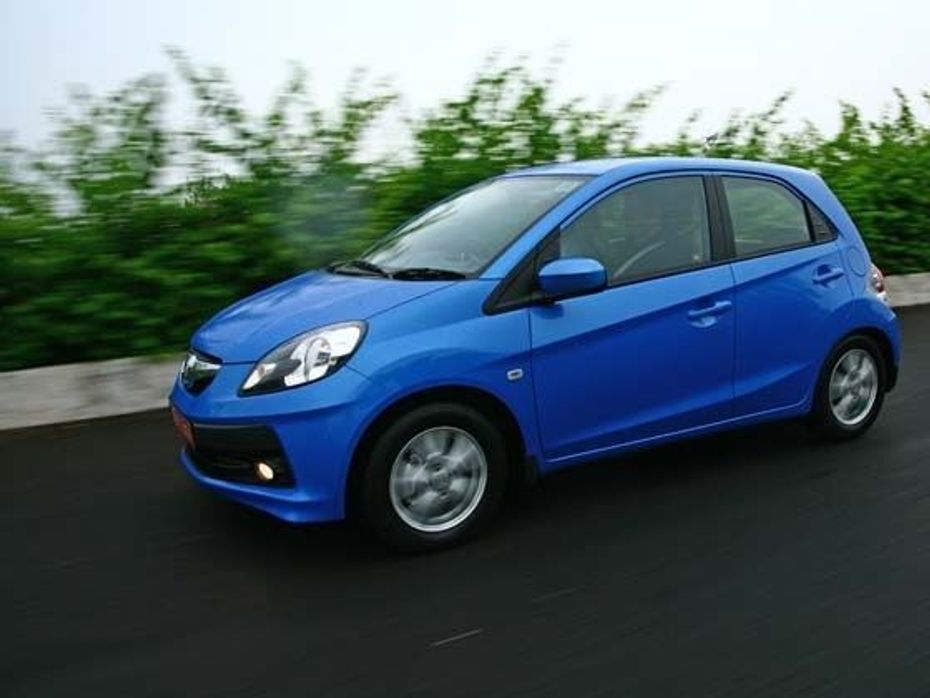
3 New Major Design Details Mahindra XUV 3XO Will Pack Over...
- Apr 12, 2024
- Views : 7817


Small cars like Maruti 800 and Hyundai Santro that drove the passenger car segment for over a decade and carved a unassailable 50 per cent of the market share has been steadily losing ground as first-time car buyers opt for more feature rich, spacious hatchbacks and sedans such as the Maruti Swift, Swift Dzire, i20, Figo, Brio and Etios, thanks mainly to the rising disposable income and paucity of diesel options at the entry level, drove people to opt for slightly bigger small cars.
While the rising interest rates, fuel prices and inflation have forced many potential car buyers to defer purchases, the ones who could afford a little bit more are stretching to compact cars that are available with good diesel options, say experts.
ET learns that for Ford, 65 per cent of its Figo buyers are the first time car buyers while for Maruti Suzuki's Swift and Swift Dzire it is 30-35 per cent.
For Toyota's Liva small car, Etios sedan and Honda Brio, the first-time buyers consist of 25 per cent, 18 per cent and 33 per cent, respectively, thus clearly indicating people are upgrading to more premium cars.
Between April and September of 2012, the share of small cars (Maruti Suzuki's Alto, 800, Wagon R, Zen Estilo; Hyundai's Santro, Eon and i10; Tata's Nano and Indica and Chevrolet Spark) dropped to 32 per cent from 52 per cent it enjoyed in 2007-08 and the share of smaller premium hatchback in the same period jumped to 20 per cent from 9 per cent in 2007-08.
This is despite the high profile entry-level car launches like Tata Nano and Hyundai Eon.

According to Sandeep Singh, deputy MD, marketing at Toyota Kirloskar, paucity of diesel options at the entry level and increasing choices in the B segment is driving the growth.
"Disposable incomes are rising. Now a days with husband and wife both working, there is a lot more money available and, therefore, people are upgrading their purchase.
The cars too are attractively priced and are getting bigger and feature packed to lure the buyers."
For instance, the premium hatchbacks (Ritz, Swift, i20, Polo, Figo, Brio) have been growing at a compounded annual growth rate (CAGR) of 30 per cent over the last five years albeit on a low base even as their smaller rivals grew at a CAGR of 5 per cent in the same period.
Anuraag Mehrotra, VP, marketing, Ford India, concurs that people are skipping the entry-level bands and are getting into higher segments.
"We have seen an increasing percentage of first-time car buyers moving into hatchbacks and sedans. For us, 65 per cent of Figo buyers are first-time buyers and in case of sedans too the share is as high as 50-55 per cent."
Mayank Pareek, COO, marketing and sales, Maruti Suzuki India, says the compact car segment is relatively new segment and the reason for the explosion of this category is its low base and number of new models launched in that segment in the last few years.

"The action in the compact car segment has been much more than the entry-level segment due to the new model launches. It has been growing on a low base, so numbers will look big. But Alto and Wagon R continue to be the top two selling models in the country and going ahead too, they will form a sizeable chunk at the entry level. And over 30,000 bookings for Alto 800 in 10-12 days prove this point," said Pareek.
Industry expert say, traditionally, of the total number of cars sold every year, 40 per cent is bought by first-time car buyers, 30 per cent is replacement buy and the rest 30 per cent of car purchase is an additional car in the family.
Also, a good diesel option at entry level in the current scenario could create a new segment. New attractive models like Alto 800 and Chevrolet Spark facelift could also bring back people, who are waiting.
It's no surprising that Ford, Renault Nissan and Tata Motors are working on cars which are going to be positioned in the mini car space, over the next few years, despite explosion in the premium hatchback space.
VG Ramakrishnan, managing director, Frost & Sullivan, South Asia, said that with lower car penetration, the entry level will remain ever so relevant to the Indian market.
"Once the sentiment revives and the rural market picks up momentum, the demand will be back at the entry level. And if the diesel prices were to be deregulated, the entry-level petrol cars will again be the flavour of the market," said Ramakrishnan.

3 New Major Design Details Mahindra XUV 3XO Will Pack Over...

Citroen Basalt vs Tata Curvv: Exterior Design Compared

Here’s How Fuel Efficient The 2024 Maruti Suzuki Swift Sold In...

This Tata Car Has Been Announced As The Official Car For IPL 2024

The Fronx Has Been Rebadged! Meet The Toyota Urban Cruiser Taisor,...

10 New Features Expected In The Upcoming 2024 Mahindra XUV 3XO...

Here’s How The Toyota Crossover (Taisor) Will Be Different From...

Mahindra XUV300 Facelift: Three Different Variants Spied Together

Toyota Urban Cruiser Taisor : Base “E” Variant Detailed...
India's largest automotive community